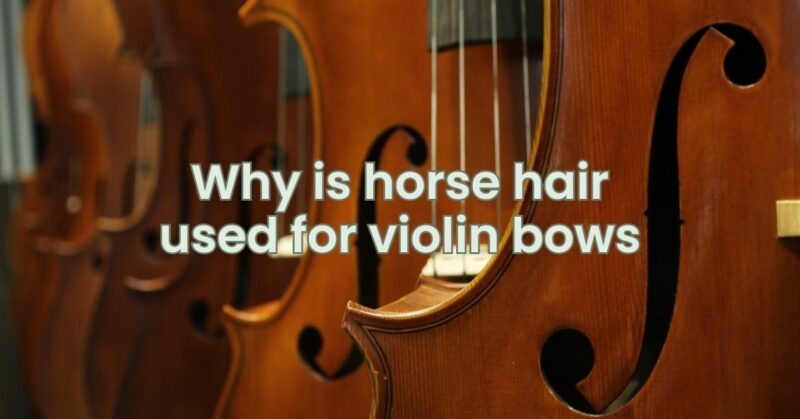The violin is a masterful instrument that draws its soulful tones from the harmonious interaction of various elements. One of the most intriguing components is the horsehair used in the violin bow. The use of horse hair in bow making has a rich history and a unique set of qualities that contribute to the artistry of violin playing. In this article, we’ll delve into the reasons behind using horse hair for violin bows, its characteristics, and the role it plays in creating beautiful music.
A Historical Connection
The use of horse hair in violin bows dates back centuries and is deeply rooted in tradition. Horse hair was chosen for its unique combination of flexibility, resilience, and tonal properties that complement the violin’s characteristics. Horsehair’s use in bows has endured through generations of musicians, reflecting its enduring suitability for the instrument.
The Qualities of Horse Hair
- Flexibility and Tensile Strength: Horse hair possesses an ideal balance of flexibility and tensile strength. This allows it to grip the strings effectively while producing a consistent and resonant sound.
- Texture and Resilience: The microscopic texture of horse hair, with its natural scales, helps the hair grip the strings and produce sound when drawn across them. This texture contributes to the resilience of the hair, allowing it to withstand the friction and pressure of bowing.
- Porosity and Rosin Interaction: Horse hair’s porous nature enables it to absorb rosin, a sticky substance applied to the bow to enhance friction and sound production. The interaction between rosin and horse hair contributes to the bow’s ability to grip the strings and create vibrations that result in musical tones.
- Natural Warmth: Horse hair’s natural warmth and responsiveness lend themselves to producing a wide range of expressive tones on the violin.
- Durable and Renewable: Horse hair is durable and can withstand the rigors of bowing. Additionally, it’s a renewable resource that can be replaced when worn out.
The Process of Preparing Horse Hair
Before horse hair is ready to be used in violin bows, it undergoes a careful process of cleaning, sorting, and bundling. The hair is typically sorted by color, length, and texture to ensure uniformity in the bow. It’s then bundled together and attached to the bow’s frog and tip, forming the functional part of the bow that comes into contact with the strings.
Caring for Bow Hair
Maintaining the quality of horse hair is crucial for optimal bow performance. Regular rosin application, occasional cleaning, and avoiding excessive tension are essential practices to prolong the life of the hair.
Conclusion
Horse hair’s role in the world of violin bows is deeply ingrained and essential to the instrument’s sound production. Its unique qualities of flexibility, texture, porosity, and natural warmth create a harmonious partnership with the violin’s strings. As a result, horse hair enriches the expressive possibilities of the violin, allowing musicians to convey emotions and stories through their playing. The timeless tradition of using horse hair for violin bows speaks to its enduring significance and the vital role it plays in the captivating world of violin music.


